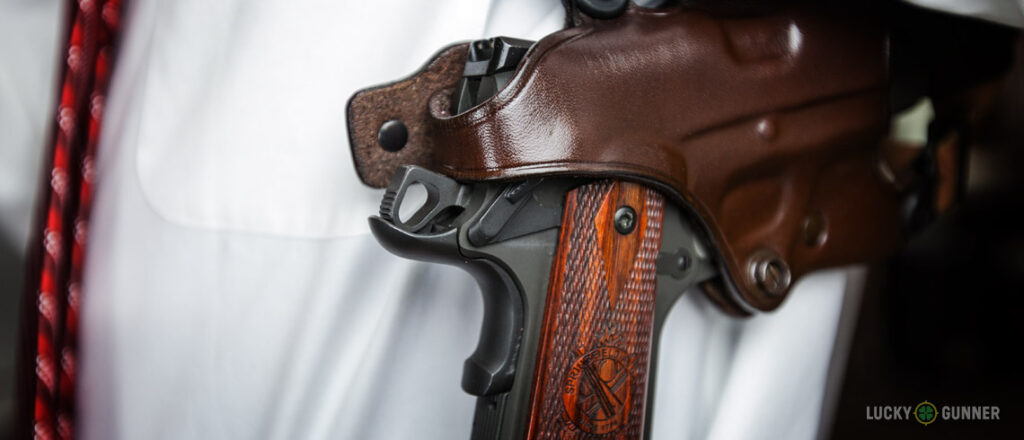Last week’s video was about some of the more popular forms of belt holsters, and today I’m following that up with more concealed carry holster discussion, including an explanation of a few alternatives to belt carry: shoulder holsters, ankle holsters, and off-body carry.
Concealed Carry Holsters Part 2
Off Body Carry
In the video, I mention that don’t recommend off-body concealed carry for most people, and I thought I should explain why in a little more detail.
Carrying a concealed handgun takes work. It’s uncomfortable and inconvenient and it requires a great deal of effort to figure out what holster works best for you and how you can dress around the gun. You can’t just cheat your way around that process by sticking a gun in a bag and still expect to get all the same benefits. You might feel better because you have a gun with you, but unless it’s glued to your hip, it may not be with you when you actually need it, and you greatly increase your chances of having it stolen.
With plenty of dry-fire draw practice and careful consideration of how to properly secure the pistol, carrying in a purse or bag can be fast, even if the other drawbacks remain. Unfortunately, the type of people who are drawn to carrying in a bag because of its ease and convenience are usually not the people who will dedicate any significant amount of time and effort to practicing. I know there are exceptions, and that’s why I’m not even more avidly against off-body carry. For those who don’t take the matter as seriously, however, maybe OC spray would be a better self-defense option.
What Have I Got In My Pocket?
One form of carry that is conspicuously absent from both this week and last week’s videos is pocket carry. In a lot of ways, pocket carry belongs with the belt/waistband carry methods, but it could still be considered a separate category on its own. It places the gun in a similar position to the 3 o’clock belt holster, but the pants pocket acts as a kind of holster. For both safety and to ensure a consistent draw, a pocket holster is still crucial, but because the pocket opening is always stationary, you always know exactly where the gun is.
More than any of the other methods, pocket carry is dependent on the size and and weight of the gun. Most people will be limited to small, single stack, lightweight semi-autos and one or two shot derringer style pistols. Even with these small guns, I can personally never seem to draw quickly or smoothly from the pocket, especially while seated, but some people seem to be able to do it. It’s just one more option to try, if you’re willing to use a gun small enough to make it work.
Did I Miss Anything?
I picked some of the most popular forms of carry for these two videos, but I know there are plenty of others out there. Some were skipped intentionally (like fanny packs… they don’t pay me enough to wear one of those on camera) and others I probably either forgot or just haven’t heard of. Leave a comment and help me fill in the blanks as we keep the concealed carry holsters discussion going.
